Ford Mustang Has Been in Continuous Production
From Sketch to Production: Evolution of the Ford Mustang Logo
The Ford Mustang is about to become the newest member of a very exclusive club – vehicles in continuous production for 50 years. April 17, 2014 will mark the Mustang's 50th birthday.
More than 9.2 million Mustangs have been sold since the car's 1964 debut. Mustang has made more than 3,000 appearances on film and TV – including "Bullitt" (1968), "Gone in 60 Seconds" (1974 and 2000), "I Am Legend" (2007) and "Drive" (2011). In 2014, a modified Mustang will be the feature car in "Need for Speed," based on the long-running video game series from Electronic Arts.
During the process of designing the new sporty car that would eventually become the 1965 Ford Mustang, the various design proposals went under many names including Avanti, Allegro and Torino. Even the design by Gale Halderman that was chosen as the basis for the production model was originally called Cougar until the Mustang name was chosen.
The Mustang name first appeared on the Mustang I sports car concept of 1962 and it featured a galloping horse badge conceived by designer Phil Clark. The emblem was evolved further for the production car in 1964 and has continued to receive updates in the nearly 50 years since.
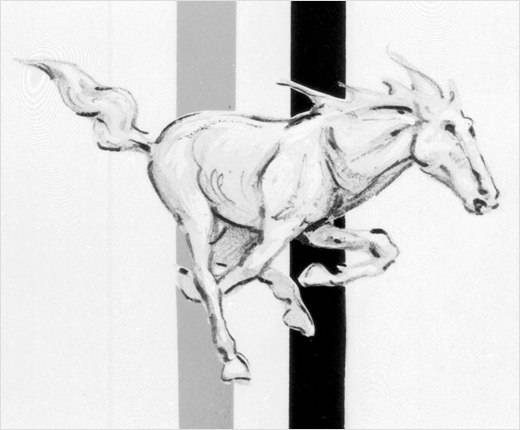
In early summer-1962, as California-based race car constructor Troutman and Barnes was assembling the running version of the Mustang 1 concept, the Ford designers gathered in the studio back in Dearborn to review sketches for the badge. The goal was to create something that reflected both a horse for the car's name and that the car was American. Phil Clark had been sketching ideas for a horse badge for several years and the team preferred his concept for a galloping horse with a a red, white and blue tri-bar design to reflect the Mustang's American heritage.
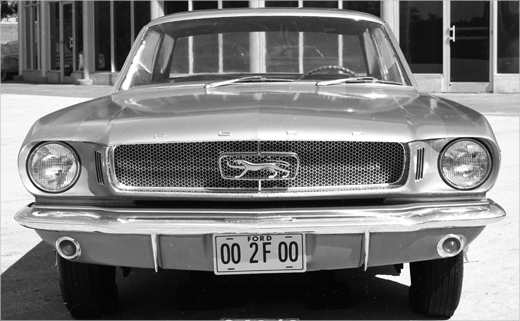
While the Mustang concept was being completed in September 1962, a competition was held among the Ford designers for a four-seat sporty car. More than a dozen very different designs were proposed but ultimately a design by Gale Halderman was selected as the basis of what would eventually be sold as the 1965 Mustang. Each design had a different name to distinguish them and Halderman's proposal was called Cougar. The grille featured a stylized big-cat contained by a surround that would eventually be known as the pony corral.
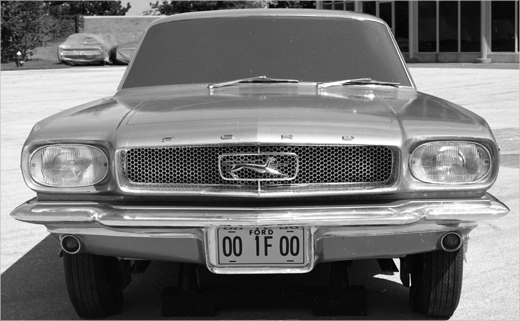
There was considerable debate about which direction the Cougar or pony should face; left or right. Various design models during 1962-1964 can be found with logos pointing in either direction.
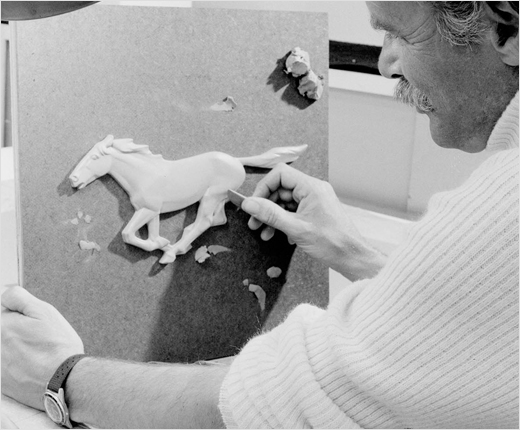
During 1963, Ford prepared a second concept based on one of the production prototype body-shells that would eventually be called Mustang II. The proportions of the pony logo as used on the Mustang I were deemed too tall to fit nicely in the production-style grille corral. Design studio modeler Charles Keresztes was tasked with creating a new version of the pony for the grille of Mustang II and the production car.
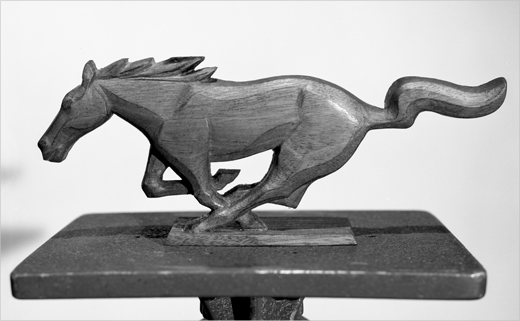
Charles Keresztes' final wooden sculpture of the production grille pony.
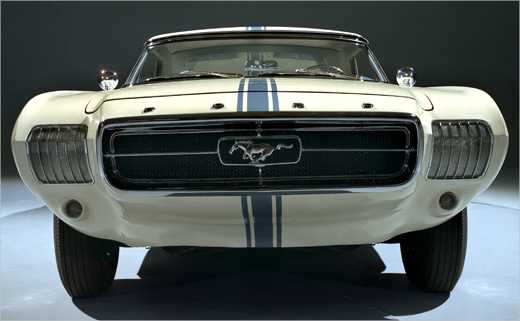
The Mustang II concept featured the first public appearance of the pony in the corral on the grille in October 1963.

Other horse-oriented logos that were considered included this horse head reminiscent of a chess knight.

Just as the Cougar logos could be found at various times facing left or right, so too with the pony. This design prototype used the right facing horse because some felt that was the way people were used to seeing horses run on race tracks.
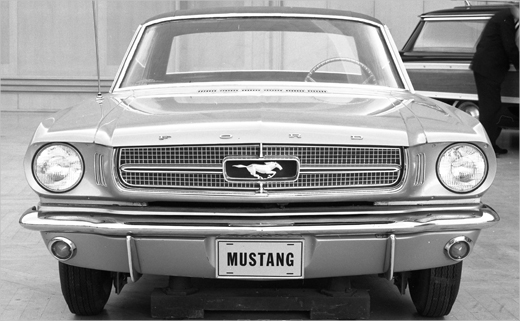
Ultimately, Lee Iacocca said "the Mustang is a wild horse, not a domesticated racer" and designer Gene Halderman felt the pony should always face left, the way Phil Clark had almost exclusively drawn it. J, Walter Thompson account executive, Frank Thomas, who worked on the name research, is quoted as saying that Mustang rose to the top "because it had the excitement of the wide open spaces and was American as all hell." Although no concrete evidence can be found, numerous anecdotes have been told that the left-facing pony represents a horse running west corresponding to that direction on a typical map.
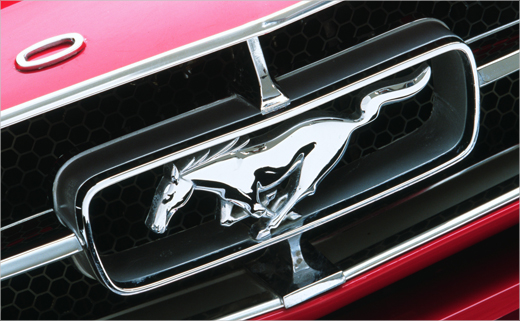
The production grille Pony emblem surrounded by the corral on the 1965 Mustang. Compared to the Phil Clark's original design, this and subsequent versions of the pony show more of a running stance rather than galloping. The head and neck are more horizontal and the tail flows out behind.

1965-66 Mustangs used a revised version of the Pony emblem on the front fenders with the pony on top of the red, white and blue tri-bar. Modeler Wayno Kangas designed the fender badge and the horse is somewhat flatter with less relief than the grille badge.
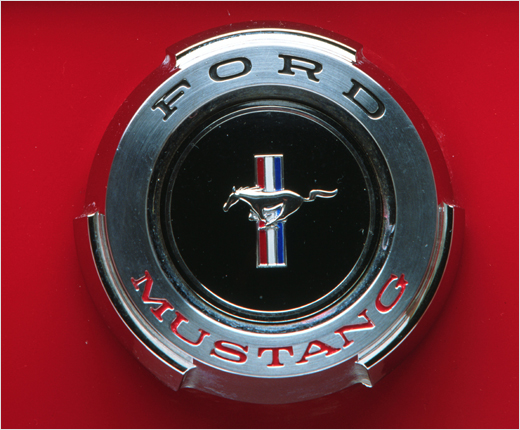
The production 1965 rear gas cap with the embedded pony and tri-bar emblem.
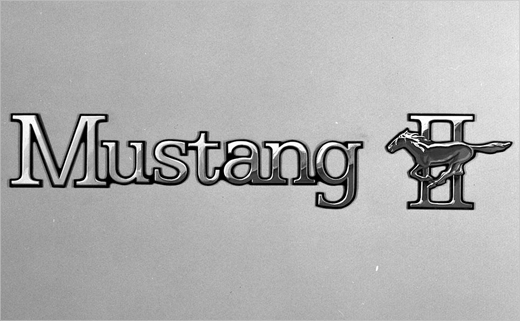
When the Mustang II arrived for the 1974 model year, the tri-bar fender badge was reworked to a Roman numeral II and the horse was re-sculpted with its head more upright and a straighter tail.
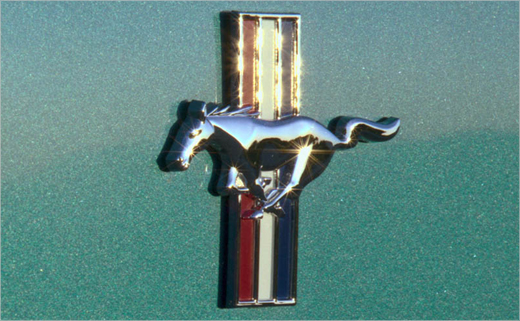
After disappearing from the exterior of the car during the 1979-93 Fox body years, the tri-bar pony badge returned to the fender of certain models of the 1994 SN-95 Mustang.

A number of special variants of the pony fender badge appeared over the years with different backgrounds including the 40th and 45th anniversary editions which used a horseshoe and the 2009 Warriors in Pink edition which featured a pink ribbon to raise awareness for breast cancer research.

The pony got its most recent revision for the updated 2010 models with a crisper, more muscular appearance.
Source: Ford
Source: https://www.logo-designer.co/the-evolution-of-the-ford-mustang-badge-logo-design/
0 Response to "Ford Mustang Has Been in Continuous Production"
Post a Comment